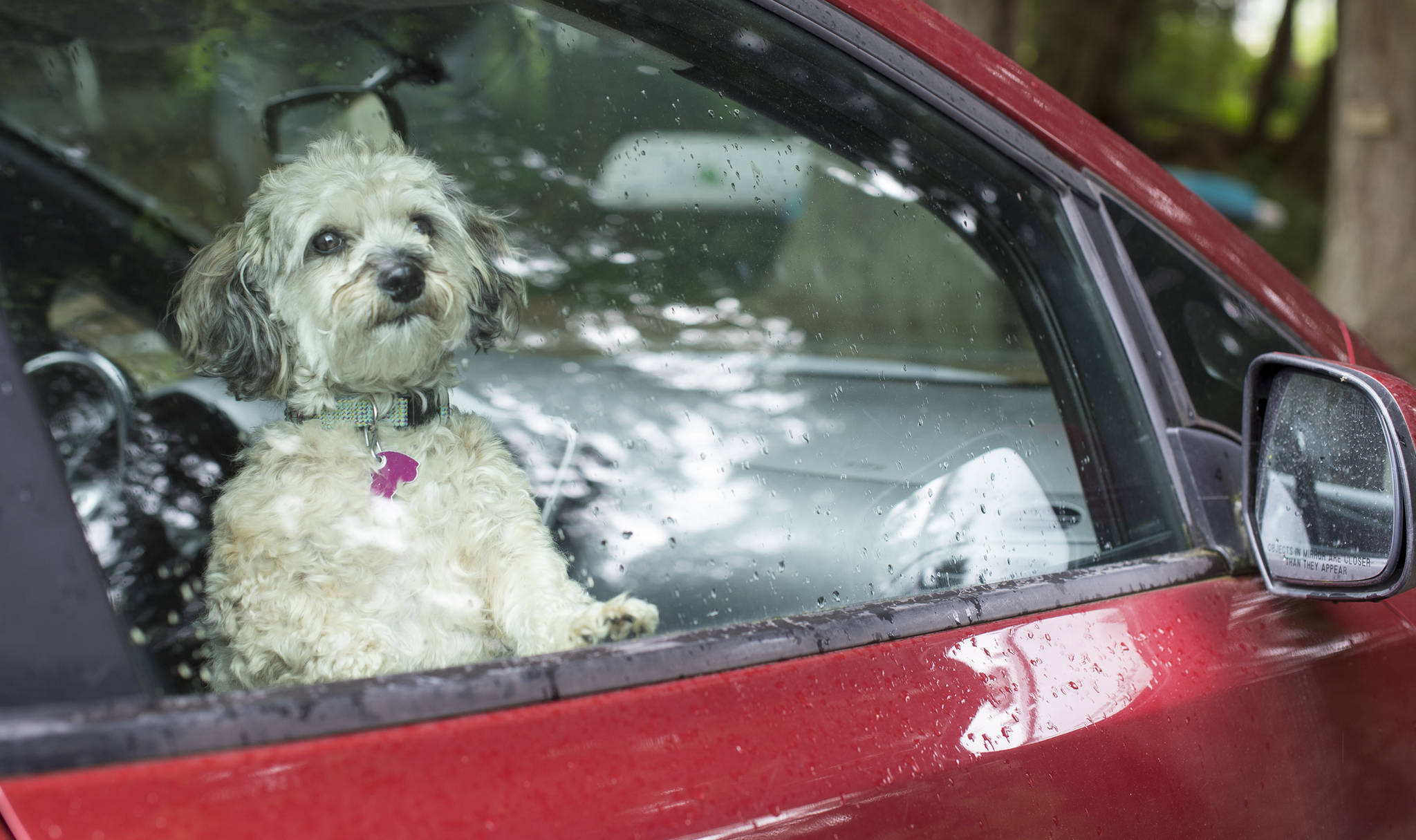Fourth of July is Gastineau Humane Society’s busiest day of the year. That is not a good thing.
Karen Wood, Animal Control Officer and Director of Animal Control at GHS, said the Humane Society receives at least a dozen calls on the holiday compared to an average day of two calls the rest of the year. Wood said most of these calls or walk-ins are about either losing or finding a stray dog. The cause is mostly related to dogs running away after being startled by loud fireworks.
“It is the day that most often has pets run off for fear of fireworks,” Wood said at GHS Wednesday. “They jump fences or escape out the front door.”
Wood offered some ideas on what can be done on July Fourth to help prevent dogs from running away. Wood said the best option is simply leaving your dog at home while celebrating. She also said taking a dog for a long walk during the day is also a good option because it tires the dog out and allows it to rest calmly. She also said having proper tags is also key.
“We recommend that all pets are wearing their 2018 city license, so we can give the owner a call and return it to them without it having to be impounded and brought back here,” she said. “If the dog is microchipped, that is also helpful because if the dog pulls out of its collar, we can still identify it.”
If people do decide to bring their dog out to festivities, she said to make sure to act immediately if the dog seems uncomfortable.
“We know that people think it is fun to take their dogs to the parade and go see fireworks, but they do not have fun like we do at the events,” Wood said. “We always do want to be with our buddies, but it is best to just keep them at home. If they are out and they do start to panic, it really is best to just take them home.”
Wood said that some dogs may have panic attacks so bad that they may need medication. She said making sure medication is well stocked or visiting the veterinarian is a good idea.
Heat and vehicle safety
With predicted warmer temperatures expected next week, Wood cautioned people about leaving dogs in cars. She said GHS received “tons” of calls once temperatures reached 40 and the sun came out in March. Wood said those are not emergency situations, but does caution that when temperatures hit 60 degrees, the inside of vehicles may become dangerous.
“If windows aren’t open and the sun is out, it can heat up real fast,” Wood said. “There is a greenhouse effect in cars with the glass. Temperatures can rise really fast. In fact, just last week we did have a dog overheat in a car.”
Usually, Wood said the incidents are accidental. She said she has dealt with one dog who died after being in a hot car too long.
Wood suggested if dogs are brought along on trips, to make sure there is plenty of ventilation. She also said if people do see a dog that looks hot and uncomfortable to call the Humane Society.
“If you see an animal that looks distressed, lethargic and panting heavily or rapidly, you should call immediately,” Wood said. “We will head out to the scene, get the license plate number and contact the owner.”
Melissa Roulette, a Licensed Veterinary Technician at Southeast Alaska Animal Medical Center, said dogs left in hot cars can lead to a serious medical situation.
“That is when we worry about heatstroke,” Roulette said. “It is like sitting in the sun without any shade.”
Dogs owners should also be cautious of their pets even outside when the temperatures rise.
“When the temperatures rise above 75 degrees and asphalt starts to warm up, dogs can actually burn their paw pads on the asphalt and any other dark, hot surfaces,” Roulette said.
Roulette said precautions that can be taken include bringing cool water along, taking breaks on longer walks and making sure dogs get time in the shade.
Another vehicle problem Wood says the society sees a lot with warmer conditions is dogs improperly restrained in the beds of trucks. It is legal to have a dog in the bed of a truck, but there are some guidelines pet owners must follow. The dog may be tethered to the cab, placed in a bed that has side and tail racks at least 46 inches high, housed in a secured animal container or cage or in a vehicle equipped with means of preventing a dog from getting loose, like a truck cap.
Improperly restraining a dog in the bed of a truck is a $65 citation but can cost even more if tragedy strikes. Wood said she remembers when a dog jumped right out the bed of a moving vehicle on Glacier Highway.
“People think their dogs won’t jump out, but we don’t know,” Wood said. “Dogs are our best friends and part of our family. We really just want to make sure that people know of the easy precautions people can take to make sure they are safe.”
• Contact reporter Gregory Philson at gphilson@juneauempire.com or call at 523-2265. Follow him on Twitter at @GTPhilson.

